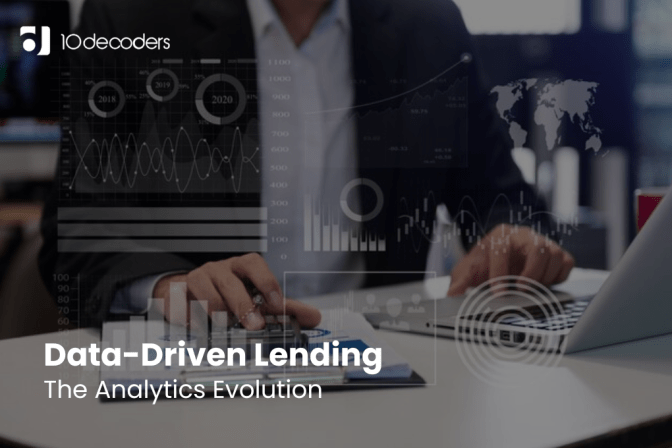Data-Driven Lending: The Analytics Evolution
The financial landscape is a vast and ever-shifting terrain, and the lending industry sits squarely at its dynamic core. For centuries, loan decisions rested on a delicate balance of gut instinct, financial statements, and a handshake. However, the 21st century has ushered in a paradigm shift, a revolution spearheaded by a formidable force: data.
From Scorecards to Symphony
Traditionally, creditworthiness was gauged through credit scores, single-dimensional benchmarks that often painted an incomplete picture. But the digital age has gifted us with a vast ocean of data, encompassing financial transactions, employment history, online behaviour, and even alternative sources like social media activity. This information symphony, when analysed through the lens of sophisticated analytics, transforms the way we understand borrower risk and potential.
The Analytics Evolution
Data-driven lending marks a multi-stage evolution
- The Early Days: Basic credit scoring models paved the path, utilising information readily available from credit bureaus. While an improvement, these models often led to biased decisions and overlooked creditworthy individuals who lacked traditional financial footprints.
- The Machine Learning Symphony: Enter machine learning algorithms, powerful tools that can sift through vast datasets and uncover hidden patterns. These algorithms analyse not just credit scores, but also alternative data points, painting a more holistic picture of a borrower’s financial health and behaviour. This leads to more accurate risk assessments and increased access to credit for underserved communities.
- The Rise of Predictive Analytics: Moving beyond simply assessing current risk, data-driven lending now embraces predictive analytics. By analysing historical data and identifying trends, these models can forecast future borrower behaviour and potential defaults with increased accuracy. This allows lenders to tailor loan terms and interest rates, mitigating risk and promoting responsible lending practices.
Beyond Risk Assessment
The impact of data-driven lending extends far beyond risk assessment. It unlocks an array of benefits for both lenders and borrowers
- Faster Loan Approvals: Automated analytics streamline the application process, reducing processing times and providing borrowers with quicker feedback.
- Personalized Loan Options: By understanding a borrower’s unique financial profile, lenders can offer customised loan products and terms that cater to their specific needs and risk tolerance.
- Improved Financial Inclusion: Data-driven lending has the potential to unlock access to credit for individuals who may have been overlooked by traditional methods, fostering financial inclusion and economic empowerment.
- Enhanced Fraud Detection: Sophisticated algorithms can detect anomalies and suspicious patterns in loan applications, safeguarding both lenders and borrowers from fraudulent activities.
Challenges and Considerations
While the potential of data-driven lending is undeniable, it’s not without its challenges. Concerns around data privacy, algorithmic bias, and the potential for predatory lending practices need to be addressed with transparency and ethical implementation.
- Data Privacy and Security: Protecting borrowers’ sensitive financial data is paramount. Robust data governance frameworks and strong cybersecurity measures are essential to ensure safe and responsible use of personal information.
- Algorithmic Bias: Machine learning algorithms are only as good as the data they are trained on. Biases within the data can lead to biassed outcomes, unfairly disadvantaging certain groups of borrowers. Mitigating algorithmic bias requires careful data selection, transparent model development, and ongoing monitoring and evaluation.
- Predatory Lending: Data-driven lending should not be used to exploit vulnerable individuals. Lenders must ensure responsible and ethical lending practices, avoiding exploitative interest rates and hidden fees.
The Future of Lending
Data-driven lending represents a transformative force, propelling the financial landscape towards a future of efficiency, inclusivity, and personalised financial solutions. As technology continues to evolve and data becomes even more ubiquitous, the boundaries of data-driven lending will continue to expand. However, it is crucial to remember that data is a tool, and like any tool, its effectiveness hinges on responsible and ethical use.
Conclusion
Data-driven lending is not just a trend; it is a revolution reshaping the very fabric of the financial industry. By harnessing the power of data and analytics, lenders can unlock a future where credit is accessible, affordable, and tailored to individual needs. But this potential can only be realised through a commitment to ethical data practices, transparent algorithms, and responsible lending practices. As we move forward, embracing the data-driven evolution of lending with a focus on responsible innovation and inclusivity will pave the way for a fairer and more prosperous financial future for all.



